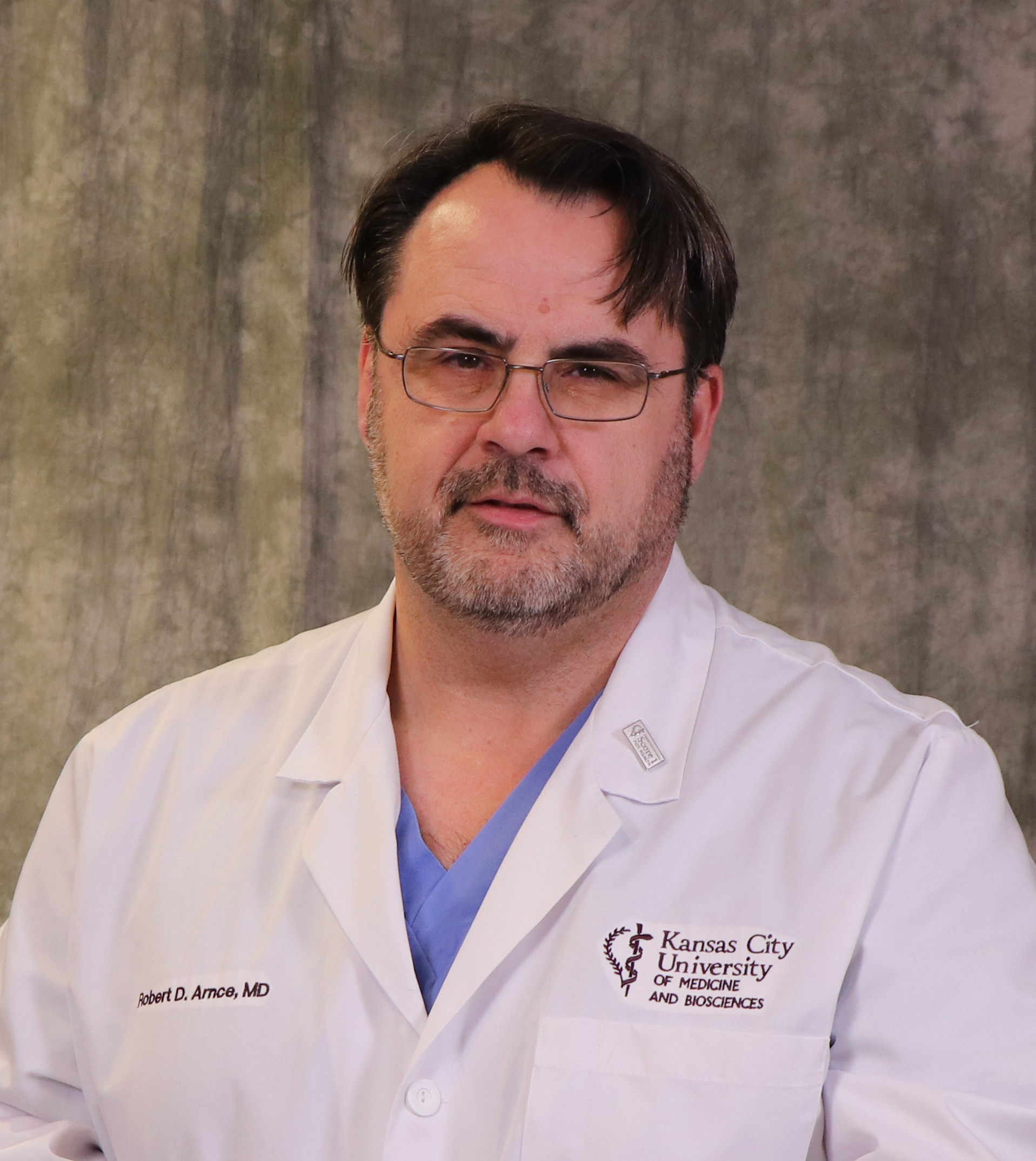Point-Of-Care Ultrasound (POCUS) Making Its Way to a Family Practice near You!
Robert D. Arnce, M.D. FACEP
Point-of-care ultrasound (POCUS) is the use of a portable ultrasound at the patient’s bedside by the clinician to answer specific clinical questions and aid in the performance of procedures. As a practicing ER physician, I have used POCUS in my practice since the mid-1990’s. I find POCUS helpful both as a diagnostic and procedural tool.
In patients who are critically ill, I use POCUS to look for causes of shock, assess cardiac activity, central venous pressure and to assist in the placement of central and arterial lines. For patients with abdominal pain, I use it to check for hydronephrosis, urinary retention, gallstones, aortic pathology, and rule out intraperitoneal hemorrhage. In pregnant patients, I use it to confirm intrauterine pregnancy, fetal activity and well-being. In my patients with musculoskeletal injuries, POCUS is helpful in the diagnosis of tendon injuries, joint effusions, hematomas, and abscesses as well as assisting in joint injections and aspirations, incision and drainage of abscesses and the performance of nerve blocks.
The benefits of point-of-care ultrasound are well established. Point-of-care ultrasound has been proven to reduce overall cost of care, improve clinical outcomes, reduce failure and complication rates during procedures, quickly narrow differential diagnoses, and shorten time to definitive treatment. POCUS provides immediate feedback to the practitioner, uses no ionizing radiation, is portable, and can be easily repeated at bedside, allowing for serial reassessments of patients.
POCUS is now taught in the majority of residencies and many medical schools. The basics of POCUS are easily learned. The ability to scan, obtain and interpret ultrasound images increases rapidly with subsequent POCUS scans by the practicing clinician. Most physician professional organizations now offer CME workshops in point-of-care ultrasound for both beginners and advanced POCUS users. There are numerous Free Open Access Medical Education (FOAMed) websites on POCUS which are free for clinicians to utilize and improve their POCUS skills.
Up until recently, the benefits of bedside ultrasound have been limited to patients and practitioners within the confines of the hospital secondary to size of the ultrasound units and cost. The first ultrasound machine I used in the early 90’s was literally the size of a kitchen oven, cost $50,000 dollars, and had very poor image quality. The ultrasound machine I currently use in the emergency department is the size of a computer screen, is easily moved to the patient’s bedside, and has excellent image quality. Most of the POCUS machines used currently in hospitals are still in the $30,000-$50,000 price range. However, many of the handheld units now have the technological capabilities needed for POCUS, and a price point such that it makes sense for individual practitioners to purchase them. I recently bought a handheld unit that plugs into my phone or iPad for $2000. I can image any structure I want with this machine, including the heart, intraperitoneal structures, musculoskeletal structures, and vessels for IV access. The images are not as good as I can get on the $50,000 machine, but they are close.
With the improved quality and reduced cost of current handheld units, POCUS can now be performed anywhere, anytime. Whether you are overseas on a mission trip, making a house call, or on the sidelines at a sporting event, you now have the ability to assess your patient with point-of-care ultrasound in real-time. Rest assured, POCUS is coming soon to a Family Practice near you…Maybe Yours.
What Will You “POCUS” Next? Family Physicians are at the center of a large expansion in scope and diagnostic tools for accuracy!
Todd Darian Shaffer, MD, MBA
What is POCUS? Point of Care Ultrasound is bedside US with a compact US unit. With new technology these are now small enough and compact to carry in your pocket. The software technology is becoming more advanced to assist physicians to accurately diagnose and rule in or out conditions while performing your physical exam. They can also be used to improve accuracy and safety of office and hospital procedures.
What POCUS isn’t?
POCUS is not a replacement for full featured US or ultrasonographers. Many times this can aid with your bedside diagnosis but often you will still want a full US to complete the diagnosis. Most POCUS is +/- meaning you can rule in or out certain things but how bad or good something is can be more difficult. However, technology is changing with AI – see below:
How can POCUS help your delivery and scope of care?
POCUS can help with an almost infinite amount of areas of the body for a family physician. It can be used in the office, hospital, ER, courtside, fieldside, remote areas, home visits, and the list go on. Because of the compact nature of the new devices and better operation they can be used in any part of the country or world. Many of these devices plug into your smart phone or tablet and can easily be used wherever you are. I have used POCUS personally for over 30 different types of exams and continue to develop expertise every day in my practice. POCUS has helped me diagnose at the bedside, be able to teach and perform procedures in a safer manner and to be able to assist patients in deciding what the next step is with added information than I could previously do based on history and physical examination.
How do I get one?
New software companies have entered the market space and created new technology that is different from the previous large traditional imaging companies and are revolutionizing this new medical space. The Butterfly IQ and Kosmos are two of the newest handhelds that are a fraction of the price of original compact ultrasounds and are an amazing value for their clinical use. You can buy directly from the manufacturer with several models less than $2000.
How Do I get trained?
Many residents are now getting trained in their residencies and even some medical schools are adding them to their curriculum as extensions of the physical exam skills. There are reputable educators around the country running hands on courses. Even the new software companies have built in training videos in their apps. There are also other online training simulators and as a family physician, the more you use one the better you get at other similar exams.
Current features of POCUS?
POCUS is adding an amazing ability to add noninvasive exam skills to your repertoire. For example, AI (Artificial Intelligence) is now being used to automatically calculate a urine volume and an ejection fraction in less than a few seconds by finding, centering on the bladder or heart ventricle and simply letting the software rotate the signal and calculate a 3D version of the intended bladder or ventricle and give you the reproducible result. All while capturing the video of the exam for documentation and review.
What does POCUS mean for Family Physicians in the future?
Family physicians are the broadest trained physicians in the world and this device is the first of many to hit the market that will broaden the family physician scope and provide value driven and safe healthcare delivery for all patients. As the software continues to develop, more exams and procedures will develop improving primary care delivery in a safe and economical method. Bedside POCUS provides vertical integrated care in the family physicians scope. In the future, POCUS will become much more of a Tricorder for those that remember Star Trek!
What is holding you back?
Start researching today. Become a member of the AAFP POCUS focus group on the AAFP website in member resource section and start broadening your scope and improving value and safety to your practice.
About the Author
By: Robert D. Arnce, M.D. FACEP and Todd Shaffer MD, MBA, FAAFP

Robert Arnce, MD, FACEP is an Assistant Professor of Clinical Medicine at Kansas City University of Medicine and Biosciences in Joplin, Missouri. He Is a Fellow of the American College of Emergency Physicians. He actively practices Emergency Medicine at Freeman Health System in Joplin, Missouri. He has a special interest in point-of-care ultrasound. He received bachelor’s degrees in Biology and Chemistry from William Jewell College in Liberty, Missouri. He attended medical school at the Mayo Medical School in Rochester, Minnesota and completed his residency training in Emergency Medicine at the University of Louisville in Louisville, Kentucky.
___________________________________
Todd D. Shaffer, MD, MBA, FAAFP, is a Professor at University of Missouri Kansas City. He is a Fellow at the American Academy of Family Physicians, where he also serves as the Missouri Delegate to the Congress of Delegates. He has served in multiple leadership roles with the Missouri Academy of Family Physicians, Association of Family Medicine Residency Directors, and the Council of Academic Family Medicine. He is one of the few physicians in the country who graduated from a Physician Healthcare Leadership MBA program.




